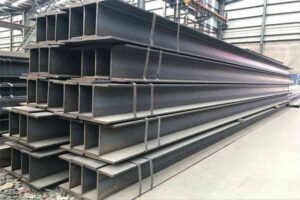The fiberglass I beam and steel beam are both commonly used in construction, but they have some key differences that make them suitable for different applications.
The fiberglass I beams are made by reinforcing a plastic resin with glass fibers. It is a solid, lightweight material that is corrosion resistant and has a high strength to weight ratio. It is also non-conductive and very suitable for use in a charged environment.

I Beam
However, compared with steel, Type I fiberglass beams do have some limitations. They are not as strong as steel beams and are therefore not suitable for high strength applications. They are also more costly to produce, so they are not always the most cost-effective option.
Steel beams, on the other hand, are made from iron and carbon, and are known for their strength and durability. They are able to withstand high levels of stress and are often used in the construction of bridges, buildings, and other large structures. They are also relatively inexpensive to produce, making them a more cost-effective option in many cases.
One of the main disadvantages of steel beams is their susceptibility to corrosion. In areas with high humidity or exposure to saltwater, steel beams can quickly rust and deteriorate, which can weaken their structural integrity and shorten their lifespan. They are also conductive, so they cannot be used in electrically charged environments without the risk of electrical shock or sparks.
In summary, fiberglass I beam and steel beams are both useful materials in construction, but they have some key differences that make them suitable for different applications. The fiberglass I beams are more resistant to corrosion and are non-conductive, but they are not as strong as steel beams and are more expensive to produce. Steel beams are strong and durable, but they are prone to corrosion and conduct. The best choice for a particular project will depend on the specific requirements and conditions.




























